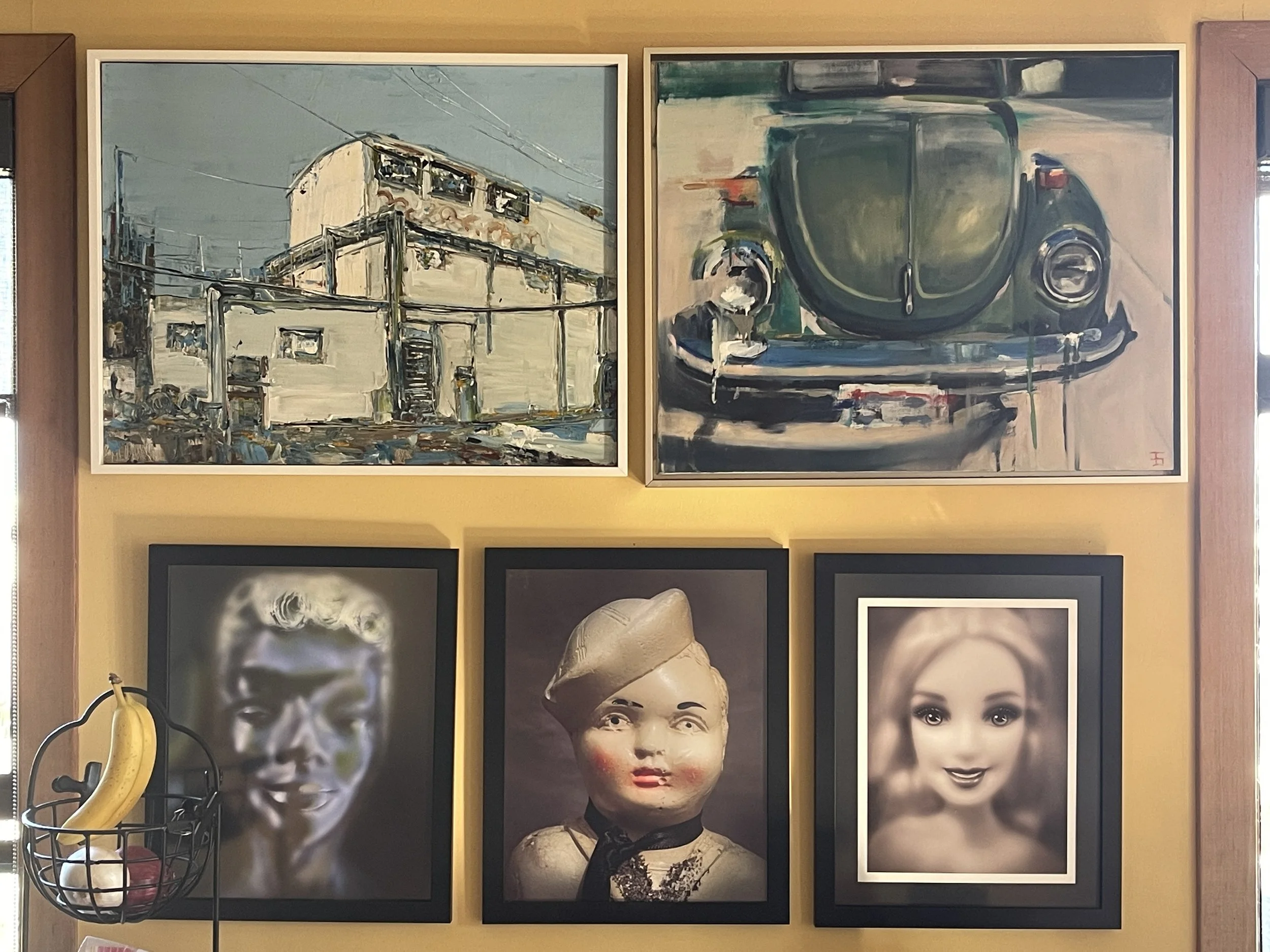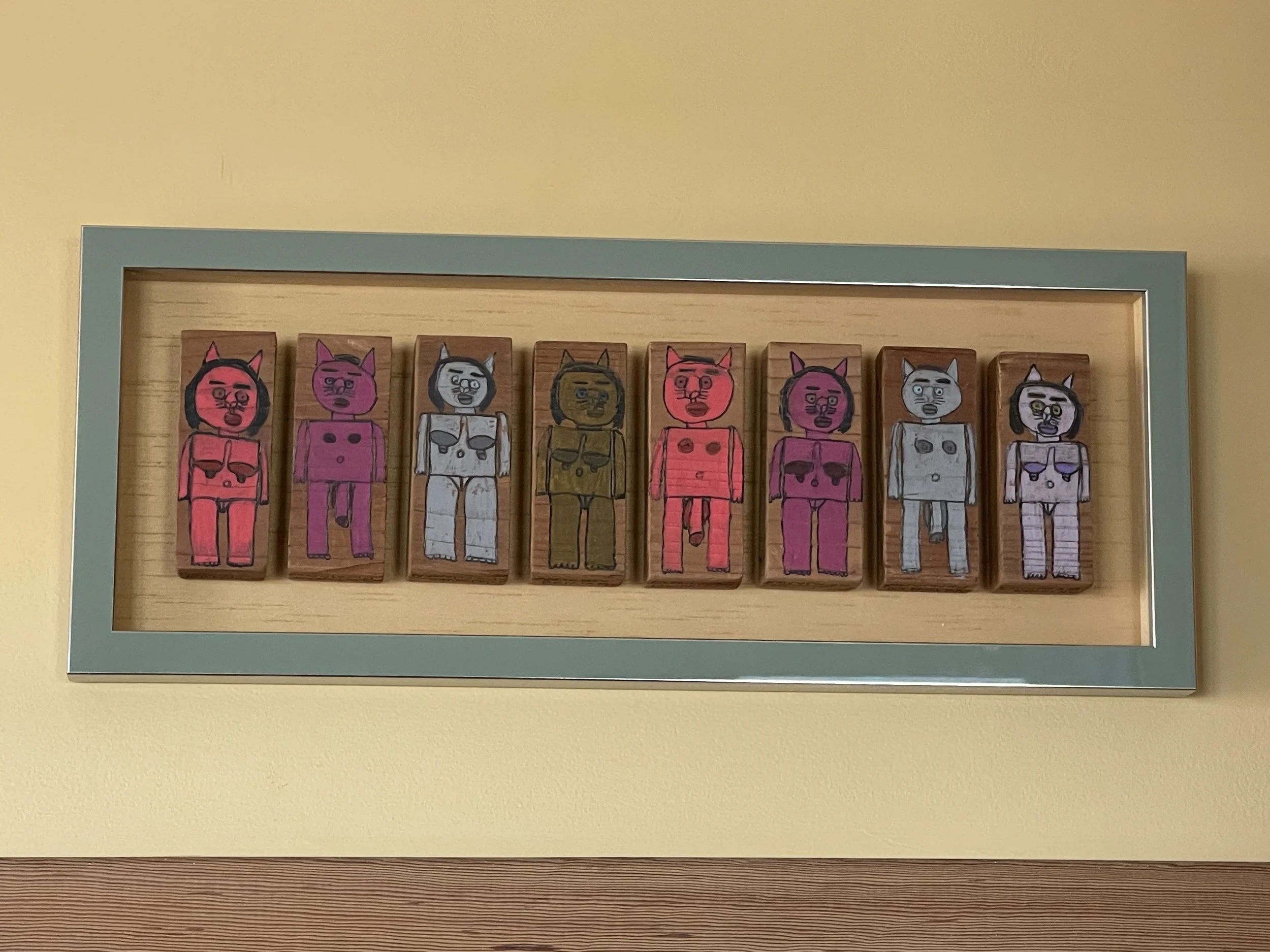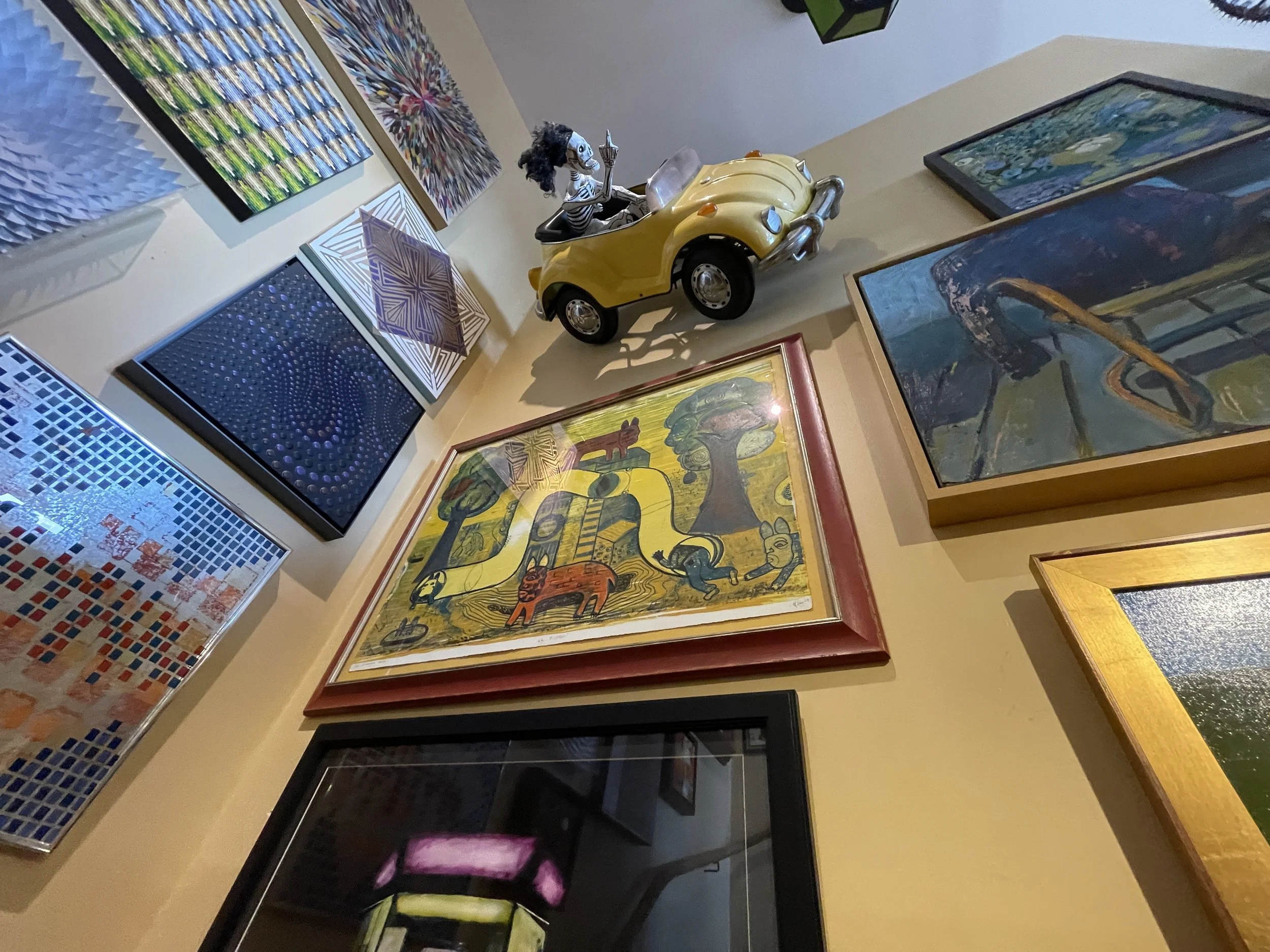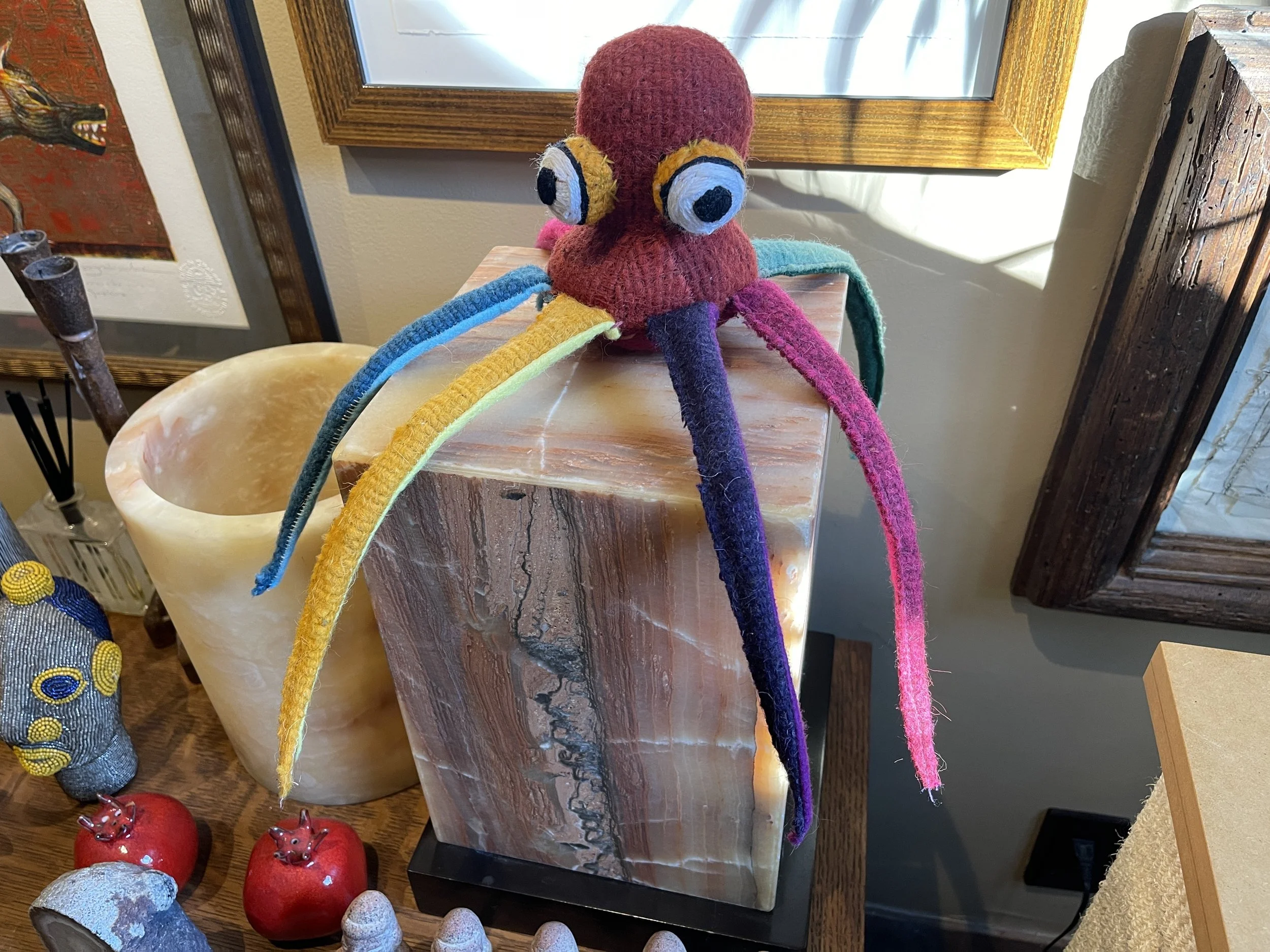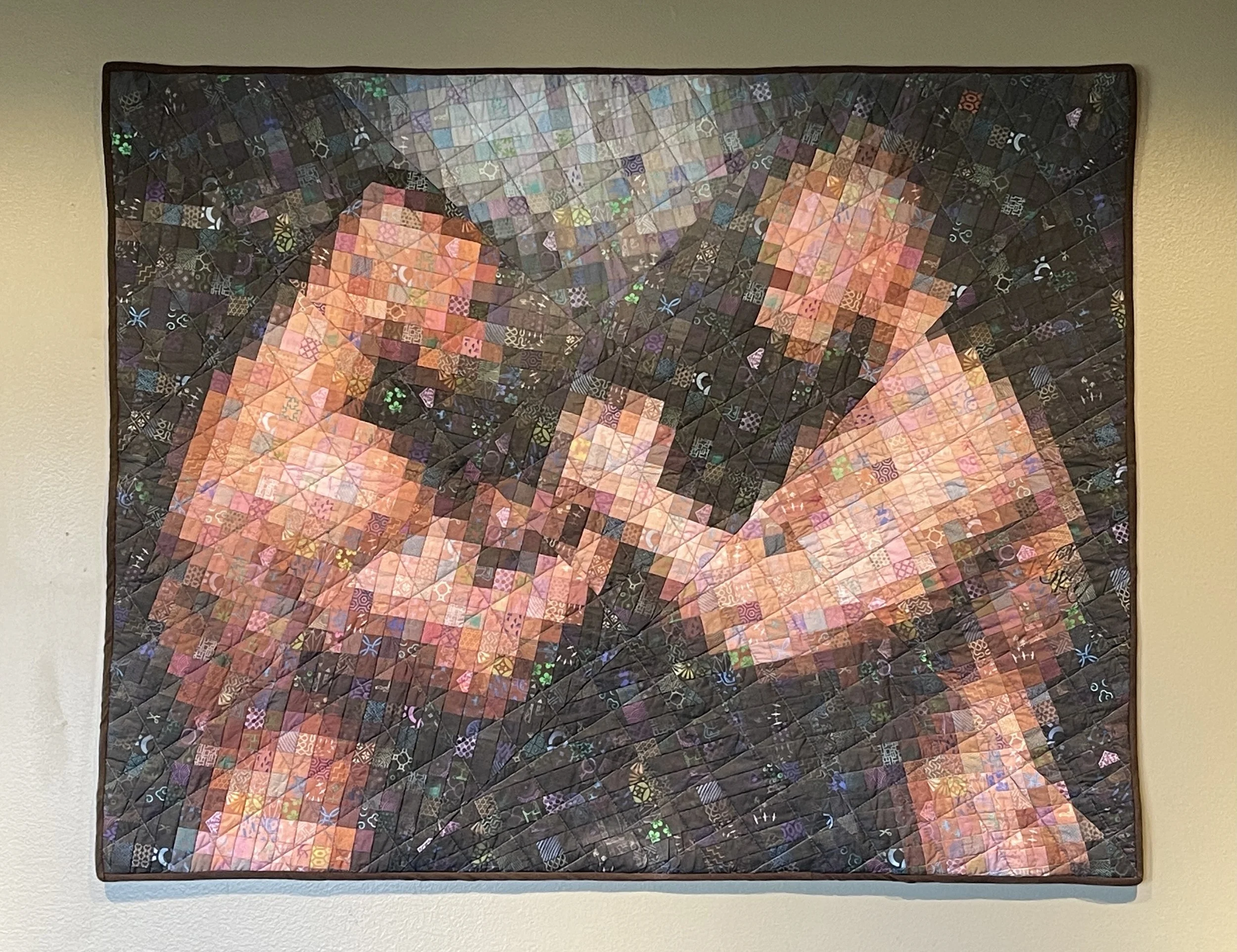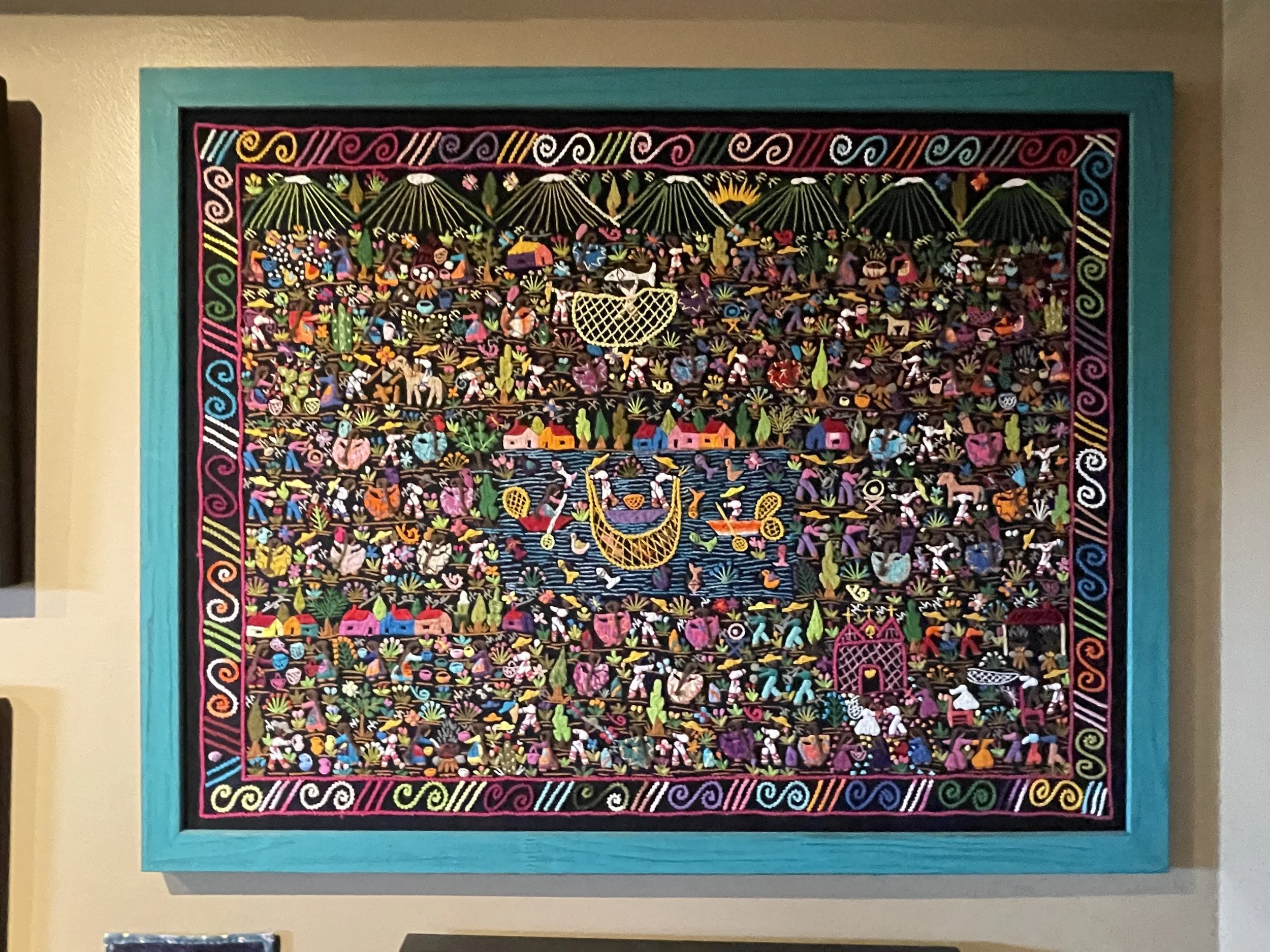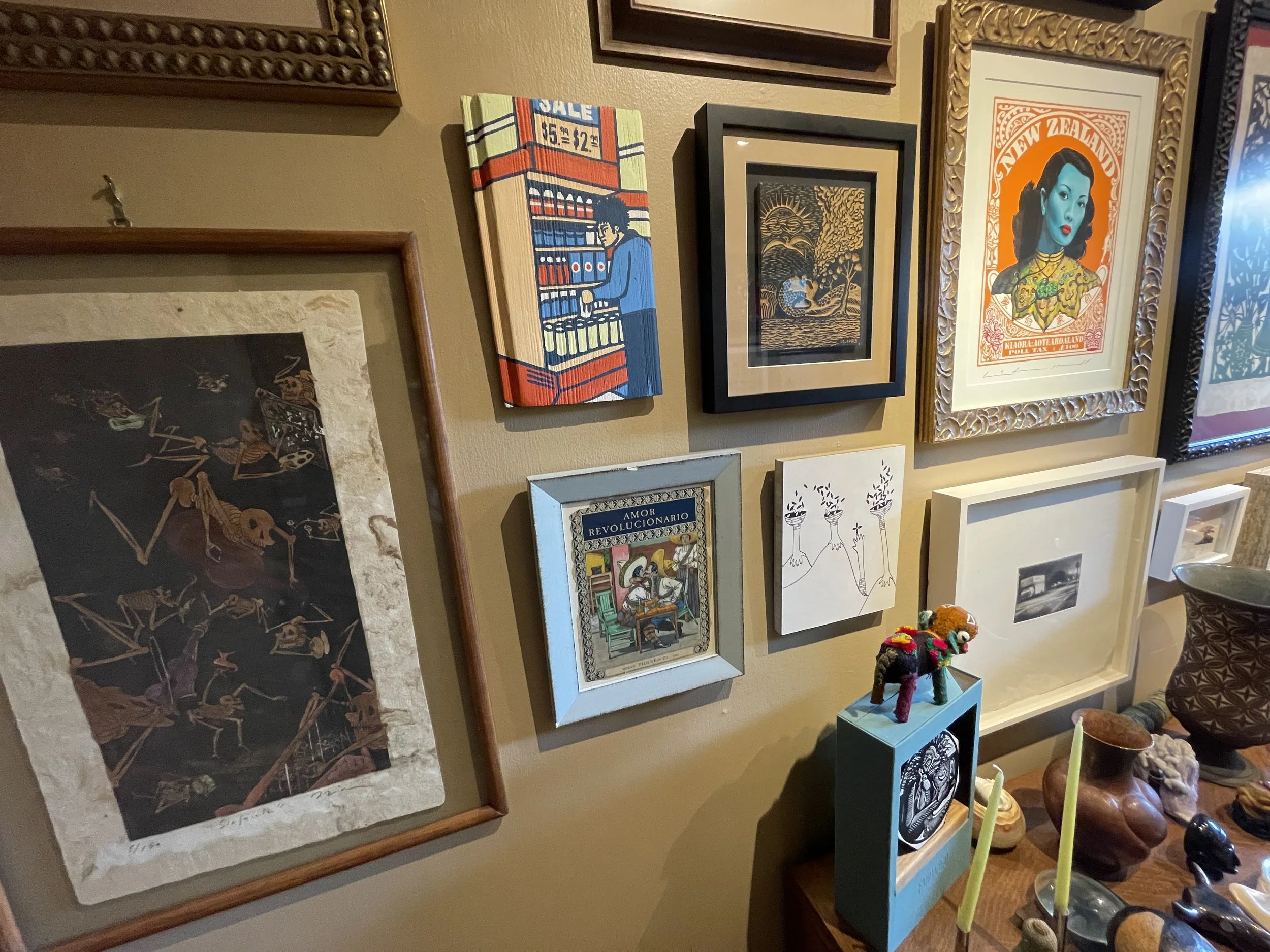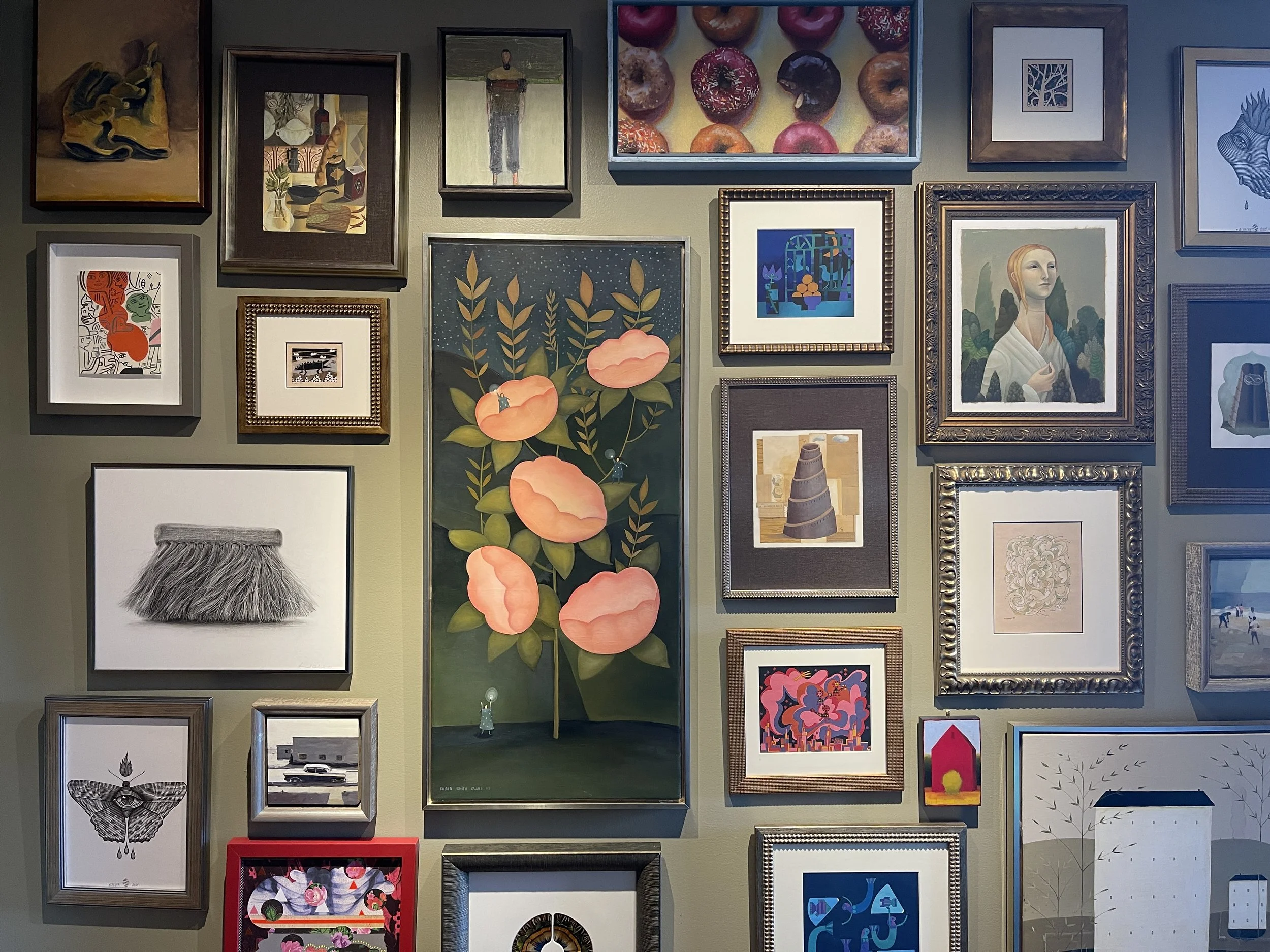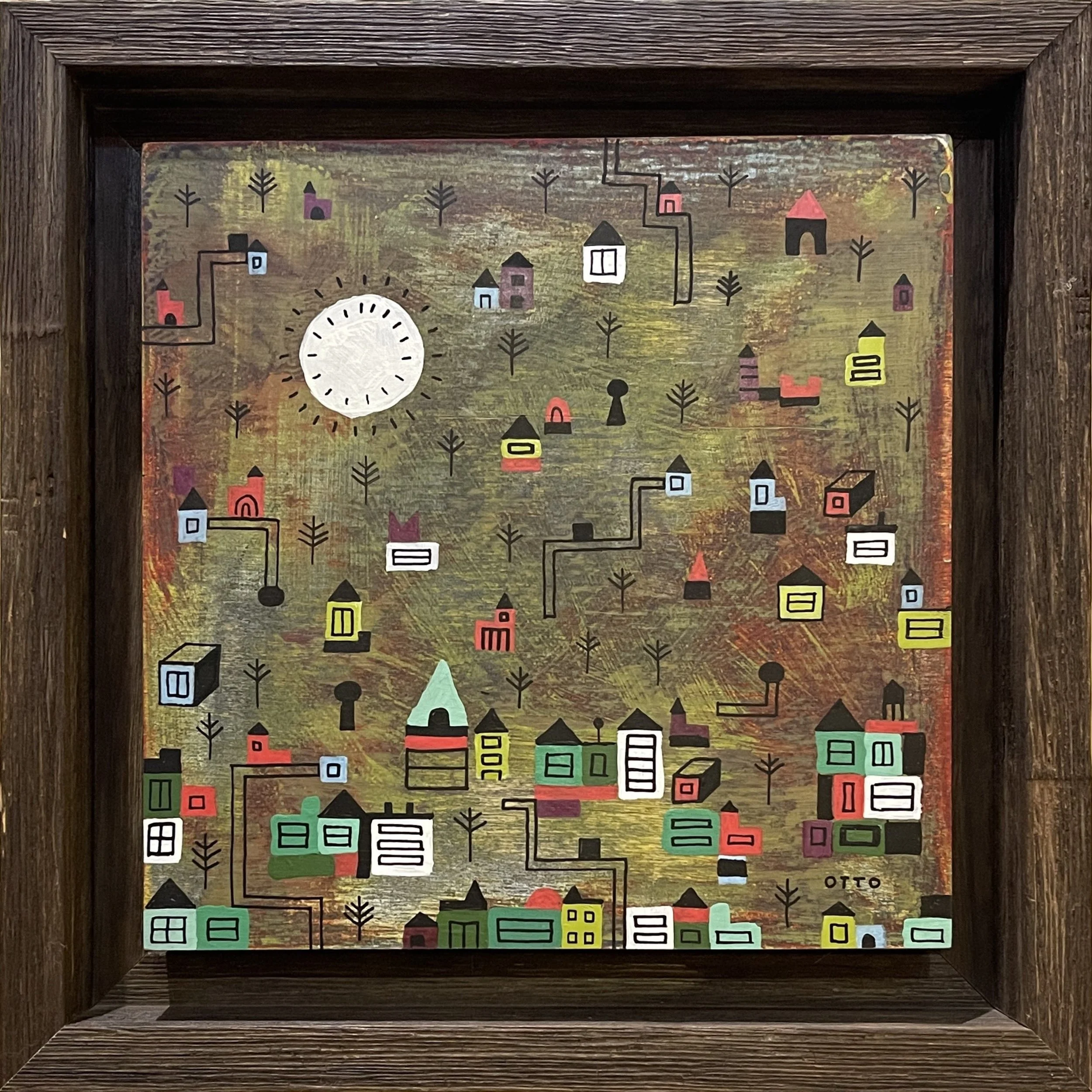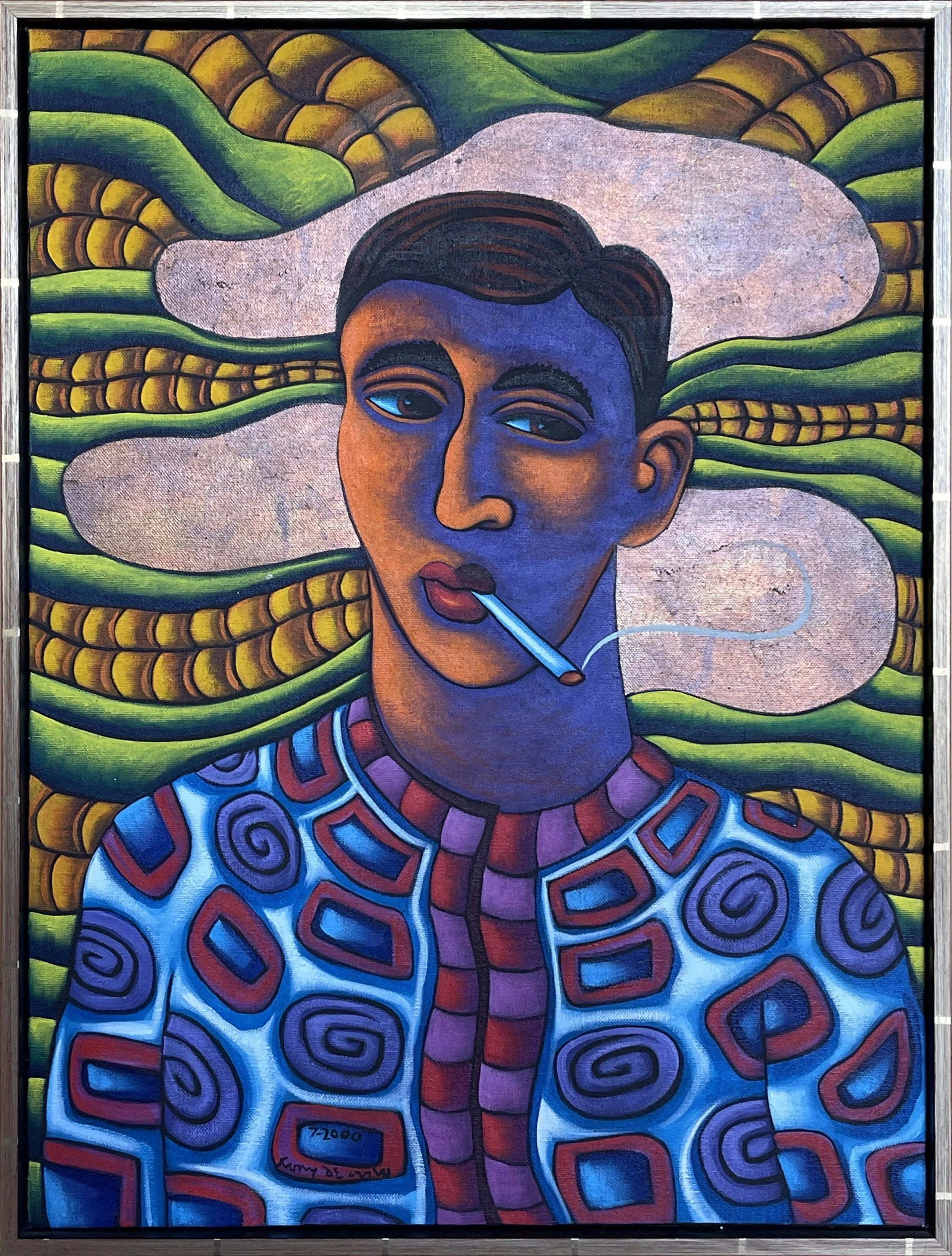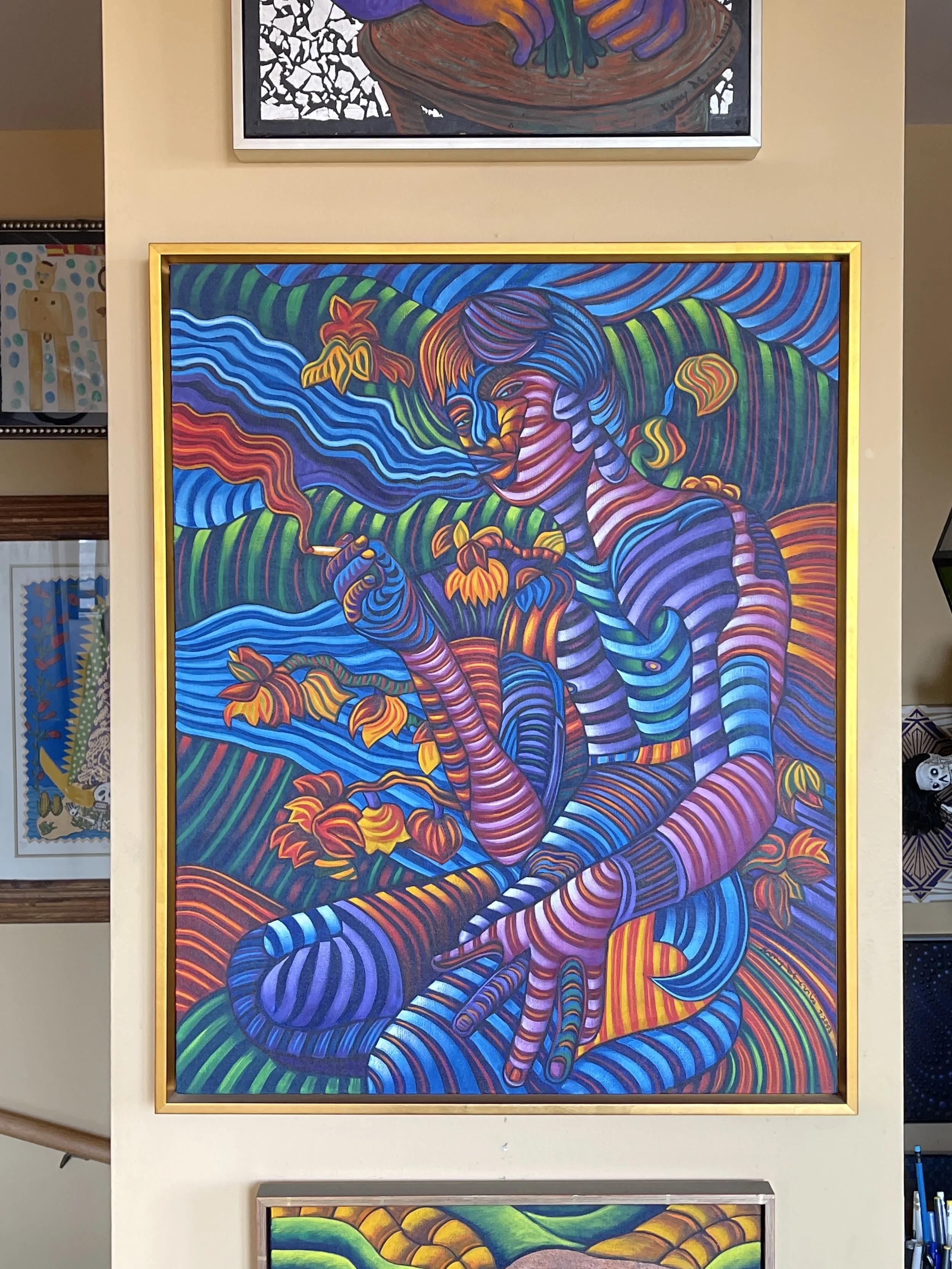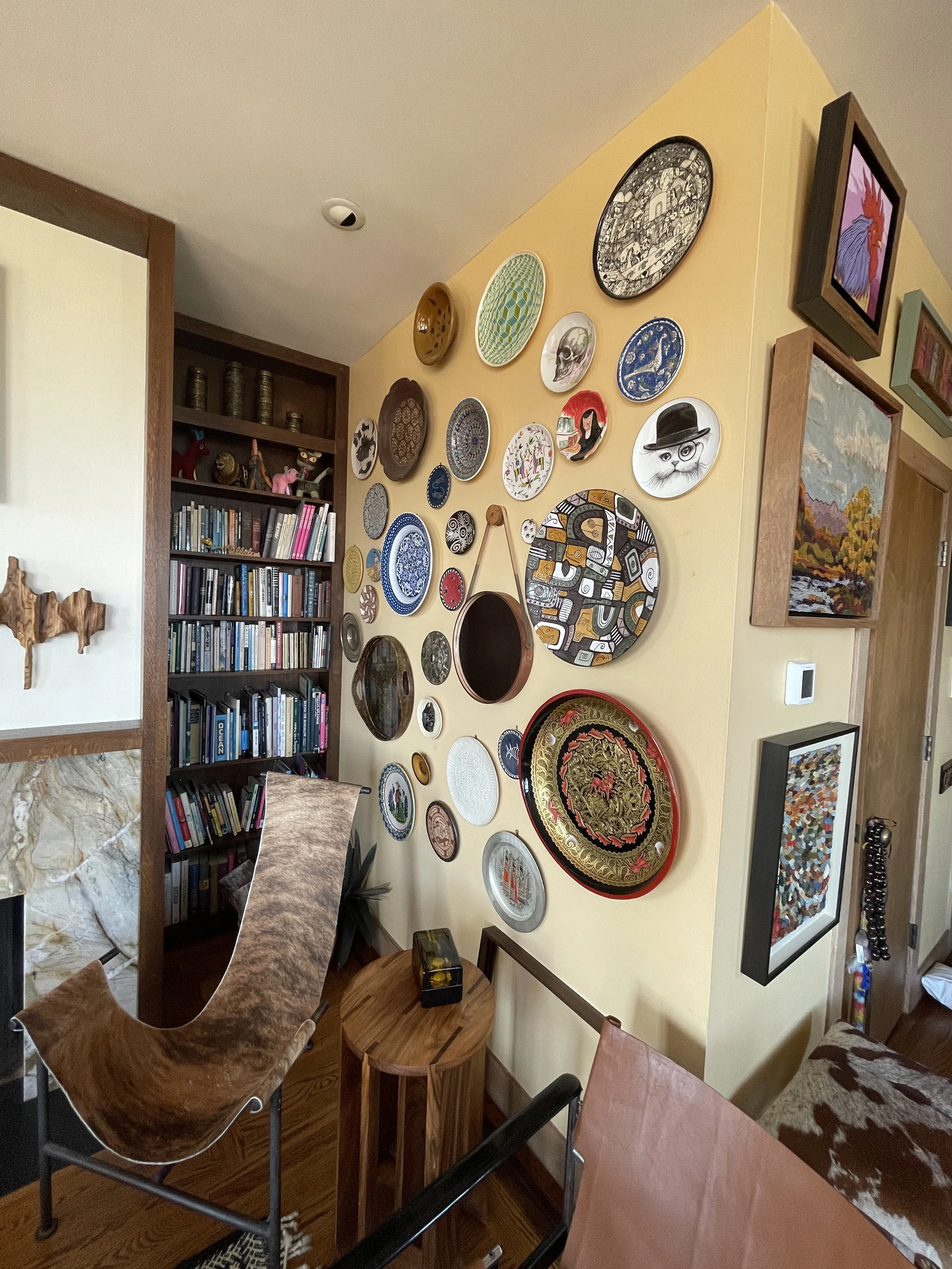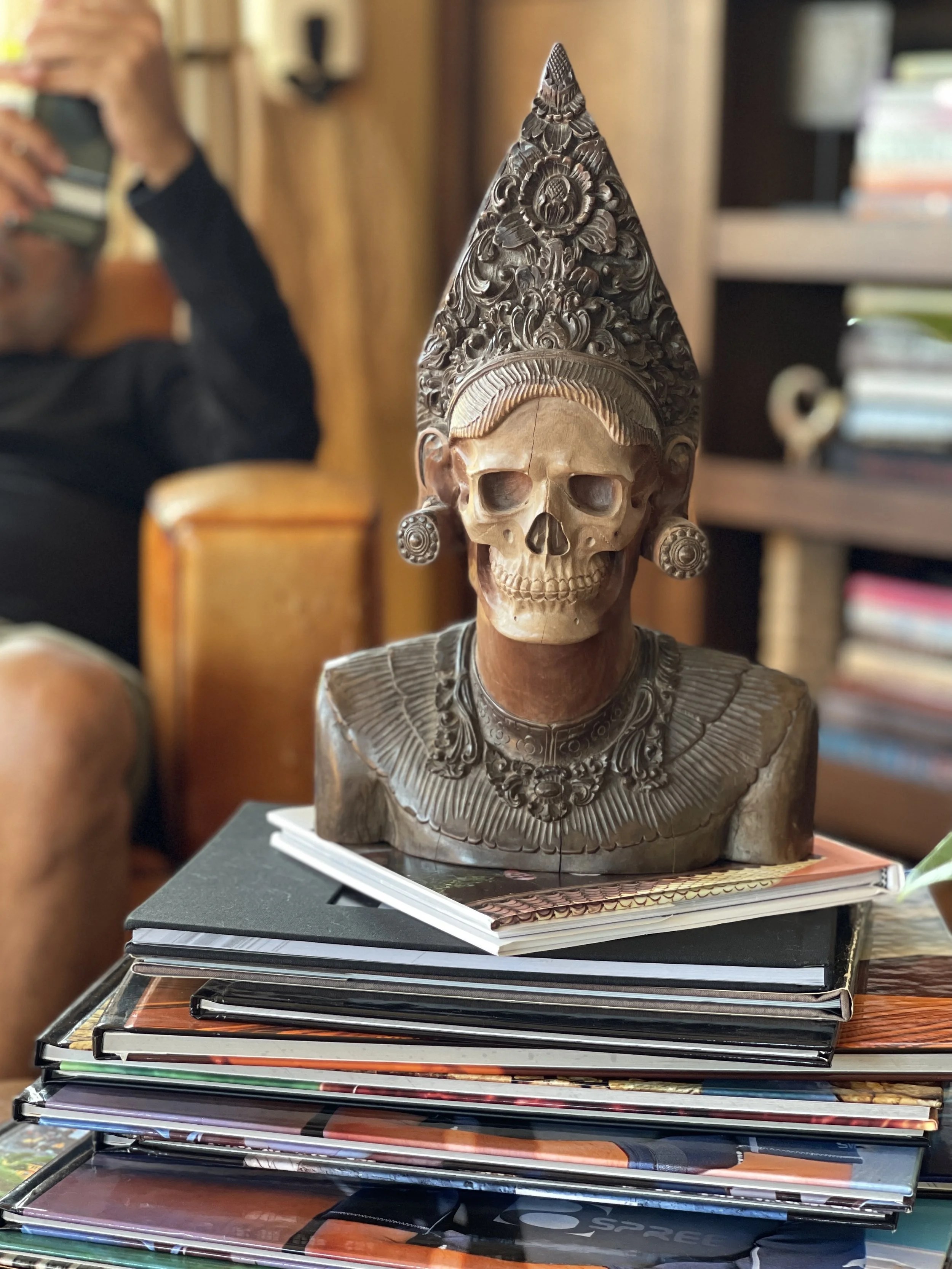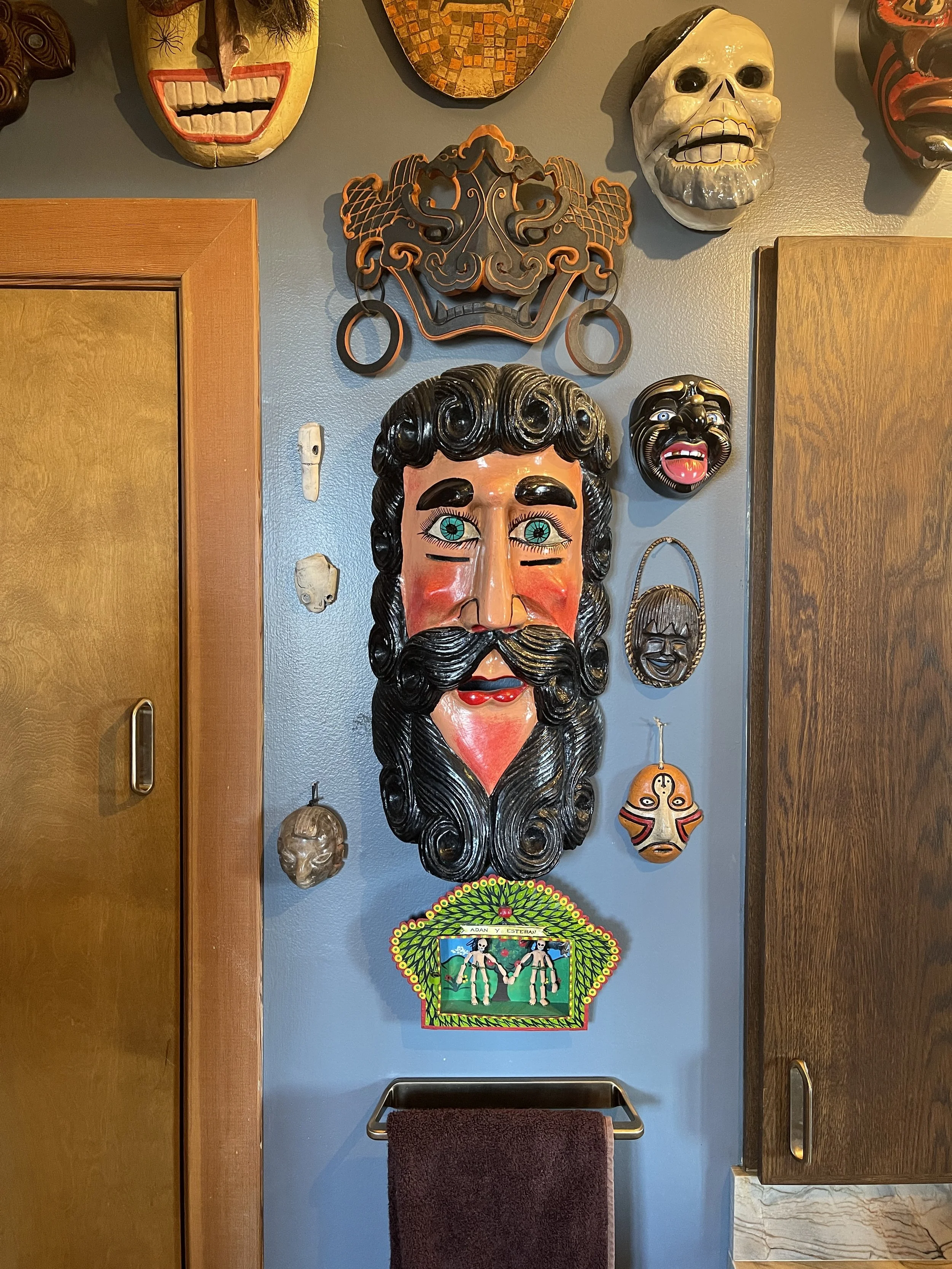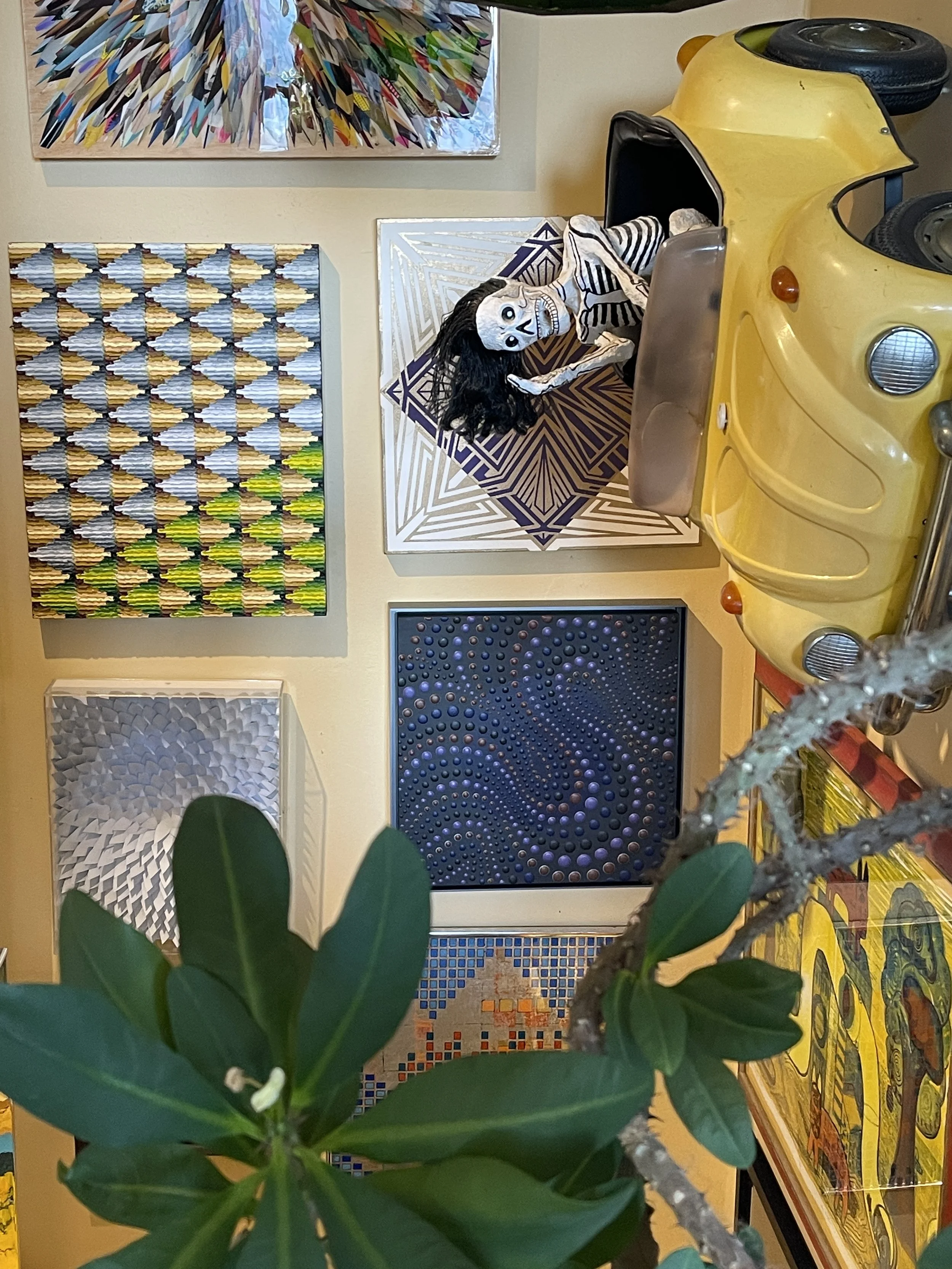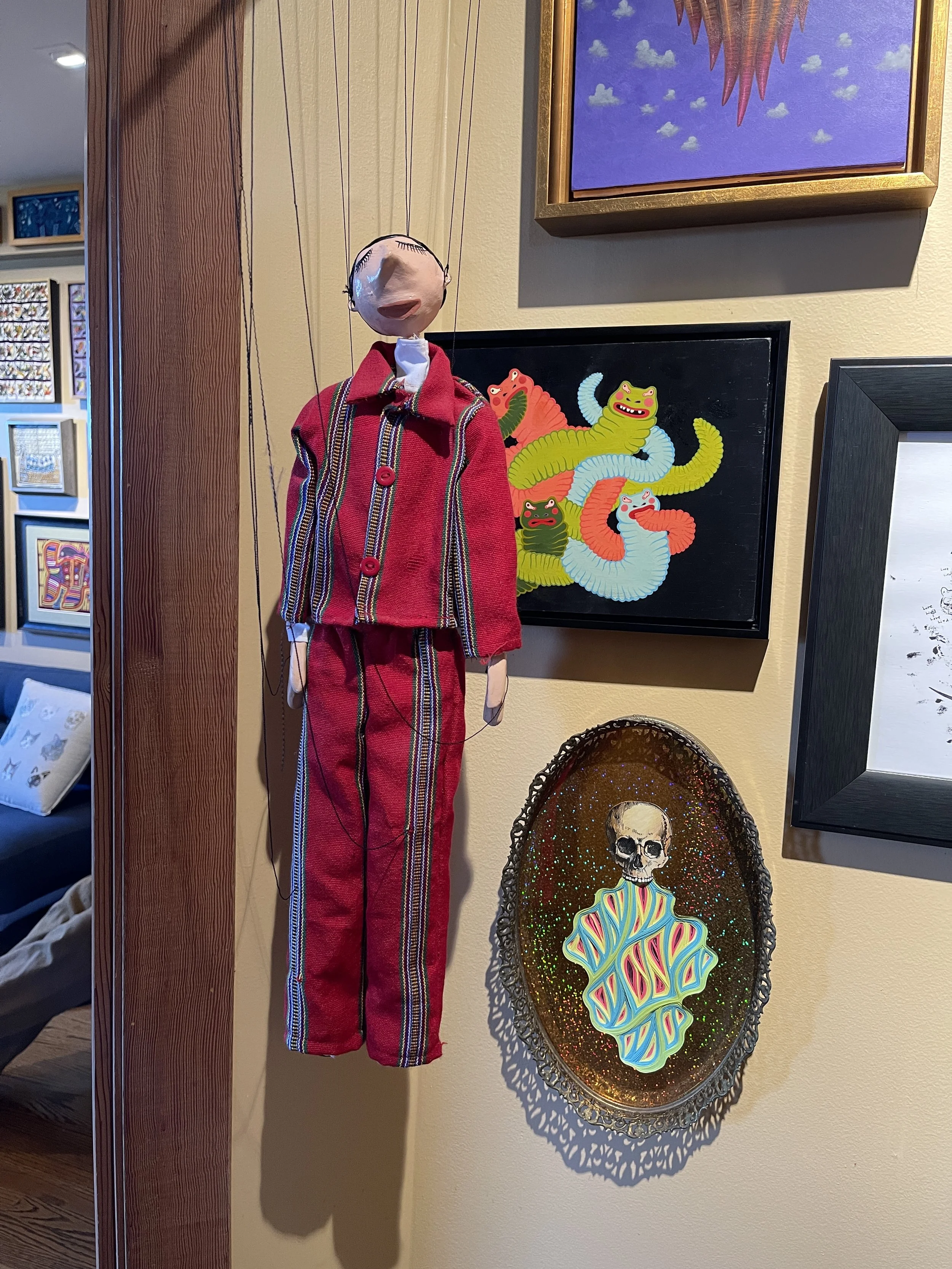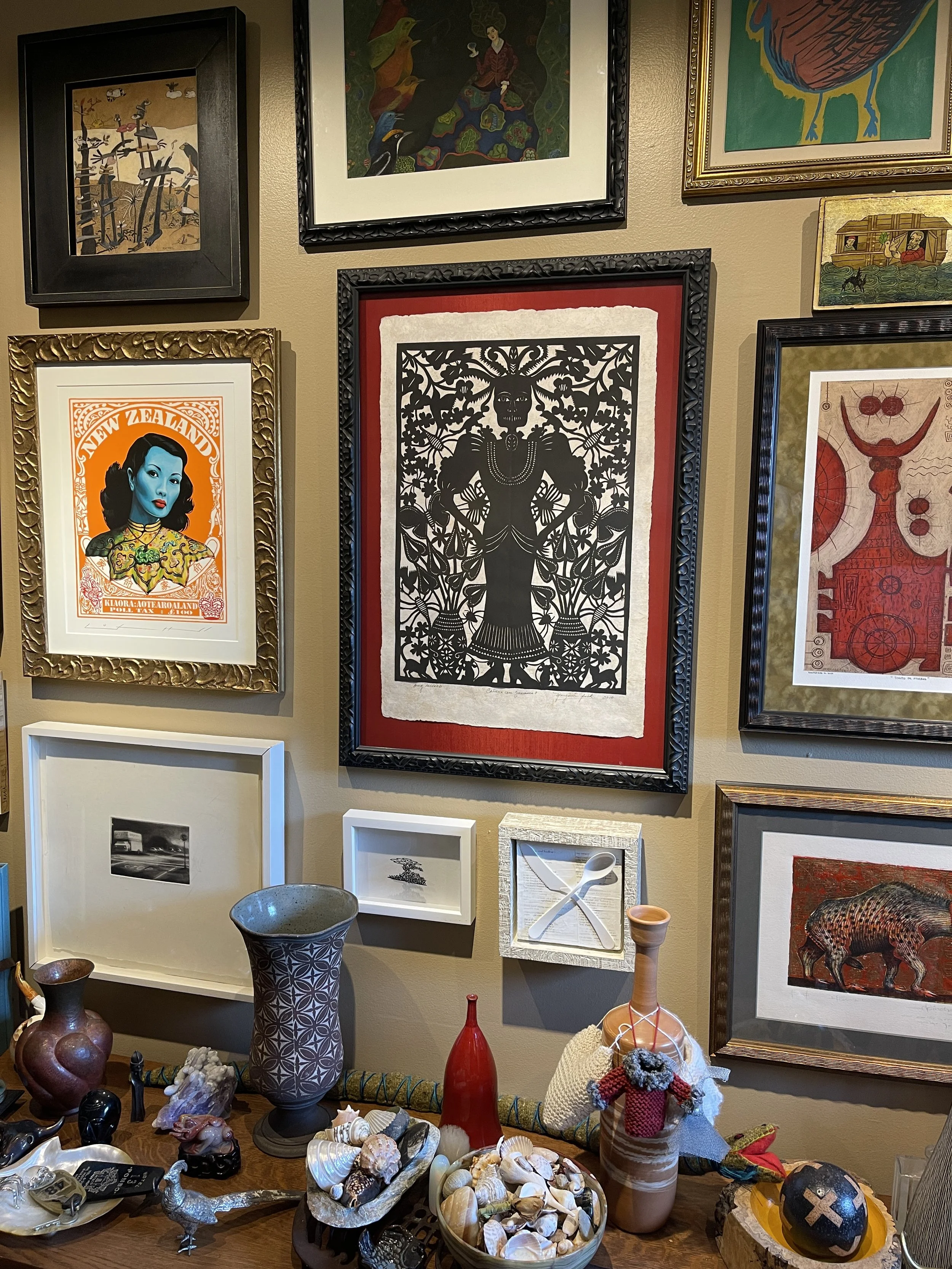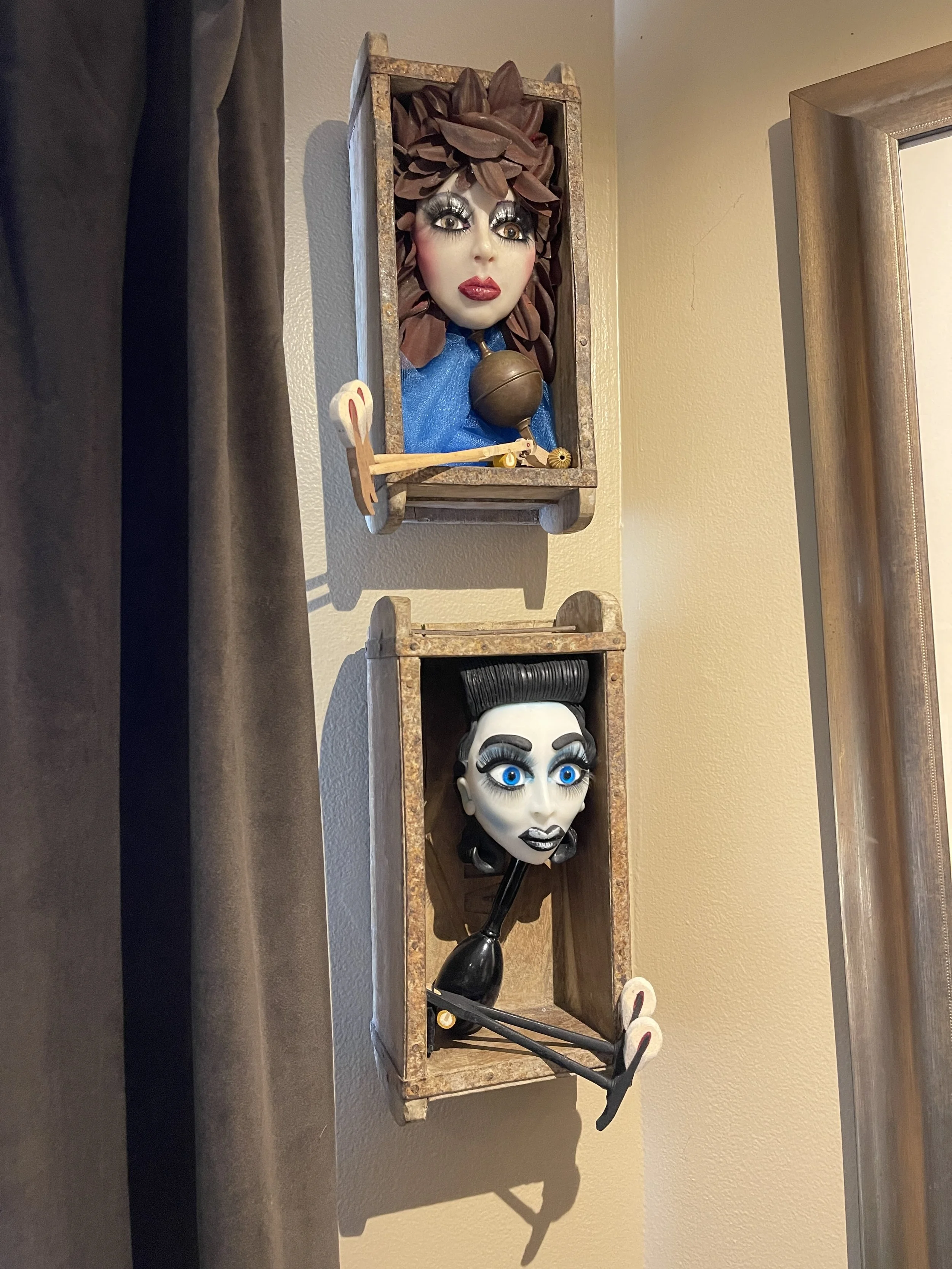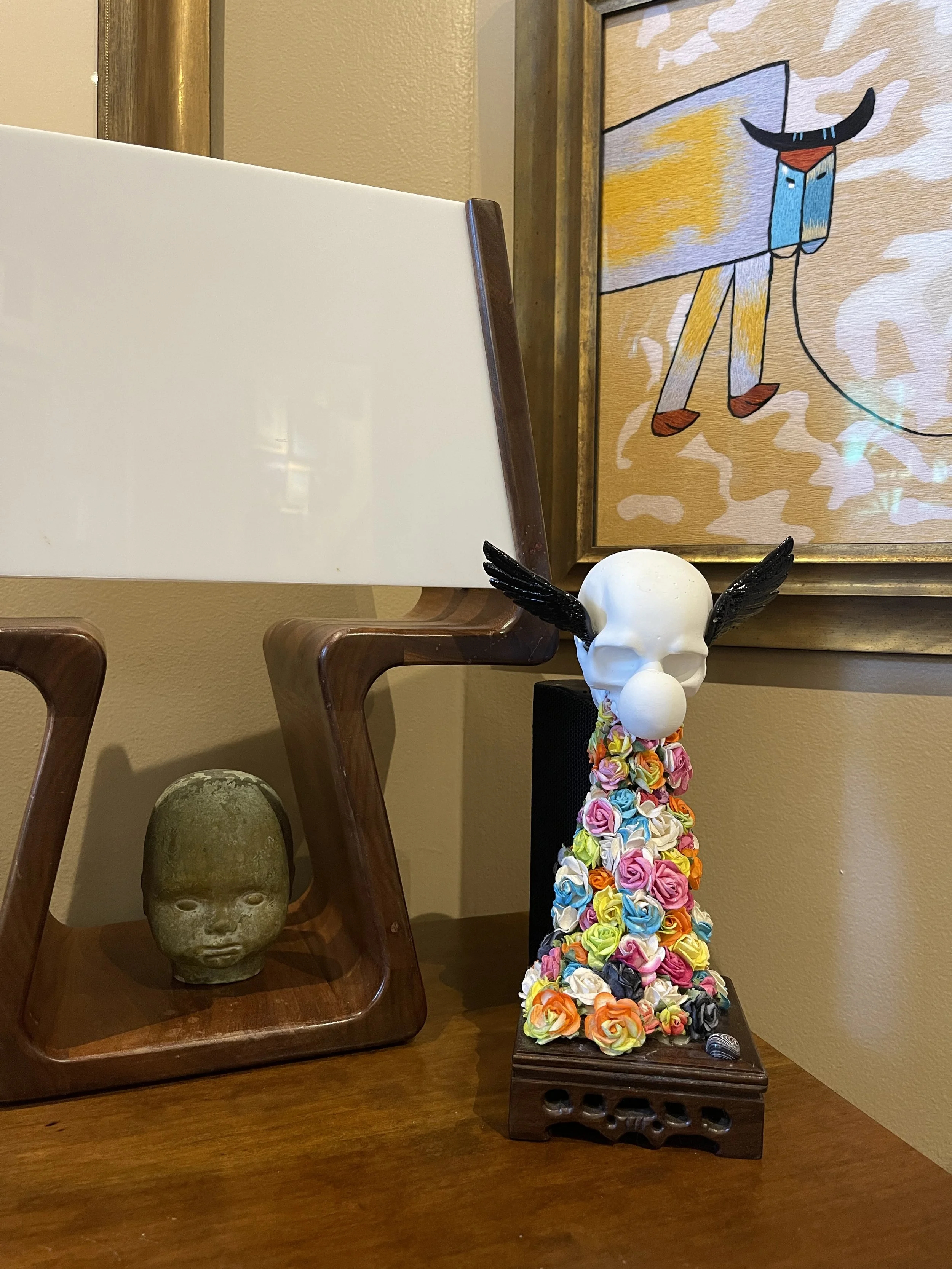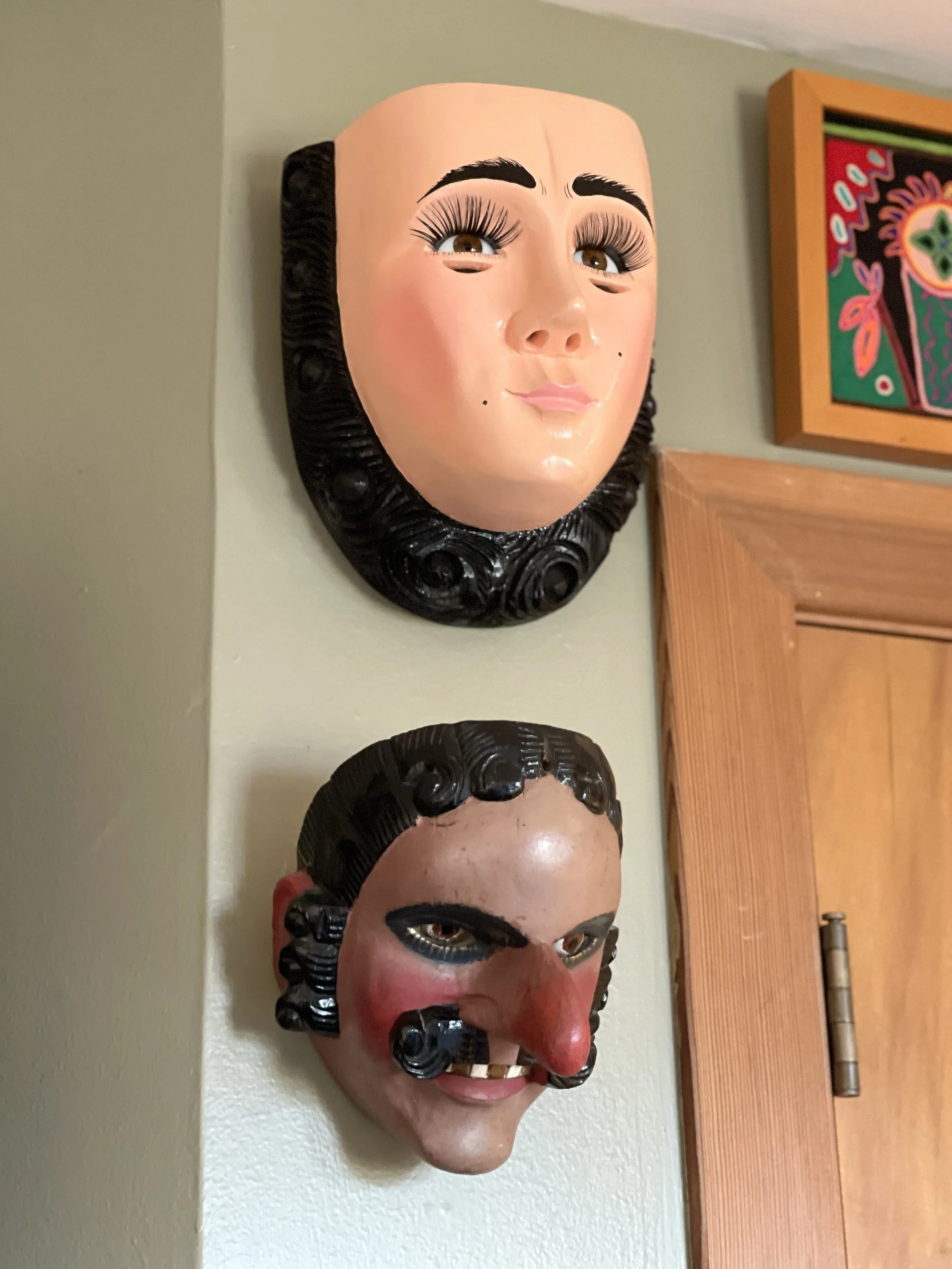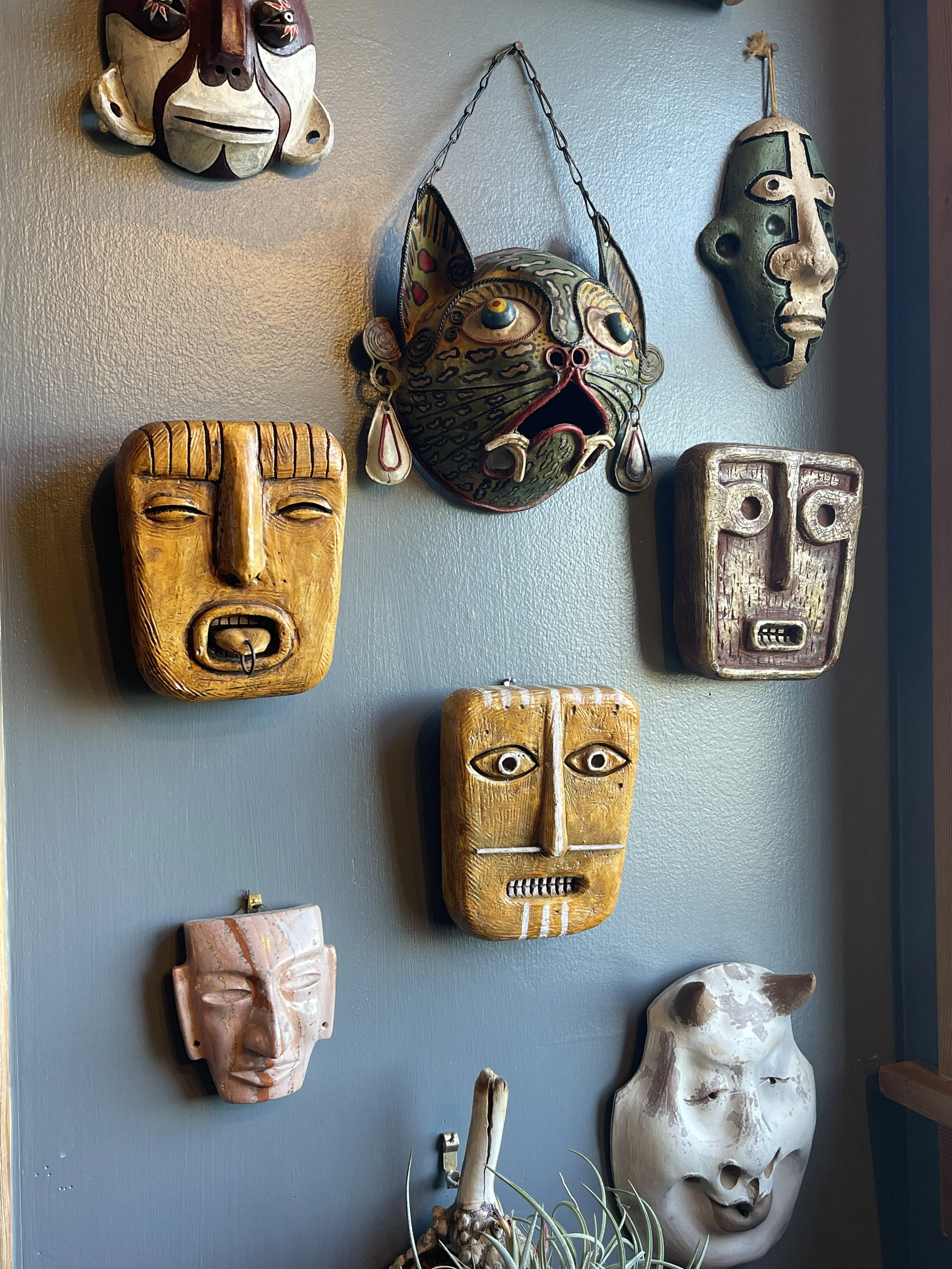Collector’s Corner: Joshua Schwartz & Joel Villalon
By John Vochatzer
While recently getting into the practice of doing studio visits and interviews with artists, it occurred to me that it would be a lot of fun to do the exact same thing, only with art collectors instead. Not only are those who avidly collect and appreciate art important members of the creative ecosystem, but collecting can be an art form in and of itself. Upon having the idea, it didn’t take me any second guessing to know who would be the first candidates in this new journalistic endeavor of mine; my friends and amazing art enthusiasts Joshua Schwartz and Joel Villalon.
Josh and Joel’s collection is split between two houses; one in Guanajuato, Mexico, and the other (the one that I’m familiar with) in the Castro District, here in San Francisco. The one in the Castro I have visited a handful of times now and each time is like a new experience. Their ever-growing, ever shifting collection of art features hundreds of pieces of Mexican and Latino folk art as well as other folk and outsider works from all around the world. Lately (and perhaps under a teeny tiny bit of my influence) their collection has also grown to include a lot of lowbrow surrealism and collage art, which is fascinating to see mixed in with their other tastes. A visit to their house is like a trip to a little museum where endless amounts of passion and inspiration, and not to mention thousands of hours of labor, are all on display in one gorgeously curated home.
Each work of art tells the personal story of whoever created it and often about their cultural background. When we collect something like art we then imbue it with our own meaning and it becomes part of our own narrative as well. This is certainly the case with Josh & Joel and their homes are testament to this. If more people respected, appreciated, and adored art the way that these two do I personally think that we would live in a much more beautiful and colorful society.
Thank you, Josh & Joel, and thank you for letting me take the time to explore all of the amazing stuff you’ve amassed over the years.
Hey guys! As usual, it was a pleasure exploring all the art in your ever-growing collection in your amazing house. There were lots of new pieces and pieces I’d never noticed before. Can you tell me where all this started from; how did you get into collecting so much art, and for how long has this been going on?
Joshua Schwartz: It's always a pleasure opening our home to people. We met in 1990 and took our first trip in 1991 to Mexico City, Guanajuato, San Miguel de Allende and Oaxaca. We were entranced by the folk art all over the country and came home with a few, inexpensive, beautiful pieces. It's just grown from there. Art from places we travel, from people we know and love and from local Bay area artists.
Joel Villalon: Even from those early years, Josh had trouble saying no to buying cool stuff we saw during our travels or even in buying furniture for our home. When this compulsion takes over, we’ve had to search for what we think was the most original or interesting of what was in front of us. In collecting, you sometimes, although rarely, regret what you’ve bought. We ask ourselves when buying something, “Will I continue to come back to that particular piece again and again in the future?”
Wooden storyboard from Palau.
Josh, you were telling me your grandmother was also big into collecting and you even have some of the art she owned. Do you guys think your disposition for collecting is hereditary or handed down in some sort of way?
JS: My grandparents loved to travel, and my grandmother always came home with gorgeous handcrafted pieces. Her love for art, beauty, and travel absolutely influenced my love of those same things.
Have you noticed any patterns or trends in the type of art you gravitate towards? Has your taste in art changed over time? And if so, how?
JS: Our tastes are always changing, but I also feel that the pieces together feel cohesive. If I think about it, the sense of cohesion has to do with the fact that each piece has a story. It's where, when, why, who, and how. Other common threads run in our collection, but it's the story, the sense of place and time in our relationship that makes the collection feel cohesive. In a sense, it's our story; the story of our life and relationship.
JV: Now that some time has passed, I see that we’ve amassed, for the obvious reasons, Bay Area art, LGBTQ art, folk art, and Latino art. During the pandemic, we started collecting work by artists we were seeing on the street on buildings that were boarded up. That’s when we first became familiar with your work.
You guys collect art from around the whole world. Around how many countries have you visited and brought home art from? And has your collecting led you into any memorable situations or encounters?
Painting by Nate Otto.
JS: Maybe 40 countries. Art comes home from every trip, even from within the states. As for memorable situations or encounters, this goes back to the last question. Stories, lots and lots of stories. We've met interesting people, wound up in unexpected places, and had many memorable experiences as a result.
JV: My memory is really bad, so no one memory comes to mind, but in general, we really enjoy meeting and talking to the creators of their work. We hope that our collecting helps motivate people to continue their craft.
Tell me about the house in Guanajuato. I understand this house has been quite a project for the two of you, and you’ve put a lot of work into it. It sounds like a good portion of your art collection is there as well. Can you tell me about the differences between what you have there as compared to your house here in San Francisco?
JS: The house in Guanajuato has a lot of great Mexican folk art that we would not be able to bring back safely. It also has pieces from local Bay Area artists and friends that we love and want to be surrounded with.
JV: Although we have some serious pieces in the house, we have many fun and vibrantly colored works of art. The Guanajuato house is also much better in terms of viewing and displaying art, because the house is much bigger, the walls are taller, and the spaces are filled with natural light during the day. The ceiling heights in San Francisco are much lower, but the artificial lighting at night creates a much moodier setting.
We also are co-owners of a second home in Guanajuato that’s filled with a collection of approximately 50 concert posters from various shows we’ve attended throughout the years. The artwork on each is pretty spectacular if you study them closely.
Over the years during our travels, we've bought tiles that we lug around during the trip. Over the years, we'd amassed many tiles, and at the house, we found a way to display them on exterior walls that have added to the idea of creating artful moments indoors and outdoors. We also have a pretty huge collection of lithographs, serigraphs, and monotypes from extremely talented Guanajuato and Mexican artists.
Collaged tile wall in Guanajuato, Mexico (Various Artists.)
Do the two of you ever clash or butt heads over the art that you collect and hang in the house? If so, how does that usually go?
JS: No. We each respect what the other finds beautiful. We pretty much agree on 95 percent of what we buy.
JV: That 5% usually migrates to a location where the buyer is able to enjoy the piece as they like; usually in his office.
Joel, I understand you’ve recently gotten into collecting Chicano art. Can you tell me a little bit about where this interest came from? And are there any artists in particular that you’d like to bring to the attention of our readers?
Acrylic painting by Tony De Carlo.
JV: I've always collected Latino art from our travels, but during the pandemic, I discovered some Latino street artists through your Instagram feed, and that led me into a rabbit hole of work that was new to me. For me, the work is interesting because of its vibrant points of view as I can see differences in the voices of Chicanos from the West Coast, Texas, and other parts of the country. At the moment, I'm loving Ricardo Ruiz' work. Ricardo is from my hometown of Corpus Christi, and he's such an amazing storyteller on and off the canvas.
Josh, from what you’ve told me, your collecting habits are very instinctual and even impulsive. It almost sounds like an addiction at times, haha. This can be an issue only because space is a point of concern when it comes to collecting art, and wall space is more often than not, limited. How do you plan to deal with this moving forward?
JS: I'm definitely impulsive and know what I like, but I'm also able to sit with something for awhile. It's often been beneficial to see what other work an artist has and not just go for the first thing I see. Our collection is definitely fluid. Pieces move throughout the house, from house to house and from person to person. I think there will be a time when more pieces go to other people who love them than get added to the collection.
It seems like every time I’ve visited your house, things seem to be rearranged and in different places. Can you tell me a little bit about this? How often do you move things around?
JS: It’s that fluidity. Pieces get added here and there, and suddenly it feels like it's time to reassess, to create more cohesion and flow. It just happens when it happens.
Let’s talk about the Rugrat’s Corn Kwanza piece. You recently won this amazing work of art by Jason Mecier in our annual fundraiser auction. What drew you to this piece? What does it mean to you?
JS: Omg. I love that piece. The medium, colored, freaking corn, is awesome. The image, vibrancy and texture. It fits in well with our altar and would be right at home in Mexico, country of corn.
Rugrats Corn Kwanza by Jason Mecier (Right), collage by Fred Schneider (B52s) that was a gift to Keith Haring. Various other artists.
Are there any particular artists or types of art that you’ve ever really, really wanted but haven’t been able to find or just haven’t been in your budget?
JS: Probably, but there are so many beautiful, affordable things in this world. None of our pieces cost a lot of money or are necessarily collectible. I've definitely pined for a particular piece from an artist and bought a more affordable piece, and been just as happy. Great thing is, as we have less space, new pieces tend to be smaller and often less money.
JV: Vincent Valdez and Cesar Martinez, both from San Antonio.
Lastly, can you each tell me what your favorite/most cherished piece or pieces of art in your collection are? And what makes them so special to you?
Colored pencil scuplture by Skullbali (Bali, Indonesia).
JS: I love my pencil skull from Bali. There's just something about it. I cherish the pieces I've inherited from my grandparents, and while they are not anything close to what I'm attracted to, I love the stories that come with them. My family story.
JV: Over the course of a few years, I bought several small paintings from the 70's from an artist named Henry Hagan. The seller said that he heard that Hagan moved to Mexico as a child and was a professor in Veracruz; although I haven't been able to locate any information about him. I don't know that he's even alive.


